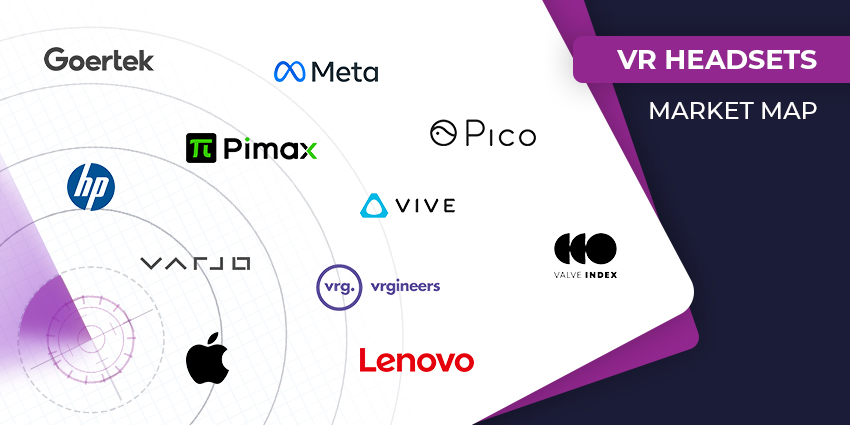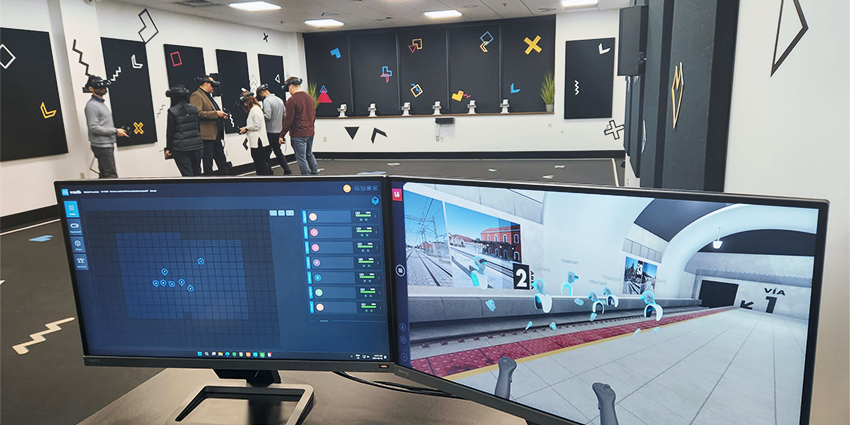5G represents a new frontier for VR.
It’s no secret that demand for virtual reality is growing. Between 2020 and 2026, Mordor Intelligence predicts that VR will shoot from a value of $17.25 billion to around $184.66 billion.
This represents some serious growth.
Certain technologies have the potential to generate even more opportunity in virtual reality. Artificial Intelligence improves computer vision and sensor tracking in a VR world. The IoT environment improves connections between various devices.
5G is perhaps the most valuable technology of all for virtual worlds. Through faster connections, companies can reduce latency, improve mobility, and immerse their users deeper into a realistic virtual environment.
The Benefits of 5G for Virtual Reality
Virtual Reality has the potential to transform the world. Particularly now, in a post-pandemic era, VR represents a way to be “present” with friends and colleagues, without the risk. Virtual Reality environments can be hubs of safe collaboration and interaction. These tools also pave the way for new levels of creativity, without the issue of wasted resources and expense.
So, why isn’t everyone using VR already? There are a few challenges standing in the way, including expensive headsets and computer systems. However, a major problem is that VR solutions need to process huge amounts of data quickly to provide true immersion. Up until recently, it’s been difficult to find the throughput required to enable consistent VR experiences.
5G solves the connectivity problem by strengthening mobile connections between VR headsets, and any software or computer systems they may be using. The benefits include:
1. Reduced Latency
Lower latency equals higher responsivity.
Today’s VR solutions have to deal with a significant time lag between a response and request. You won’t always reach out and interact with virtual content in real-time. The greater the lag, the lower the immersion. 5G can reduce latency by around 10 times, while improving data transmission rates.
The impact of reduced latency will transform the way we interact with virtual experiences dramatically. Many of the issues with “VR sickness” that people experience today come from a lag between the movements of their body and the response of the VR machine. Less latency will mean fewer moments of nausea.
2. Less Data Congestion
Although it can be easy to forget this in the moment, VR experience relies on a lot of data moving back and forth between a computer system and a headset. For a VR experience to work well, the data doesn’t just need to move quickly – it also needs to avoid congestion that would lead to jumpy images or content that doesn’t load the way it should.
When handling huge amounts of information, current connections can struggle to get all of the information across at once. This is why a lot of people find themselves phasing through walls and items in VR environments. 5G increases the amount of data that a system can process at any given time, improving the reliability and performance of the system.
3. Higher Quality Displays
An ability to process larger amounts of data also means that 5G systems can more conveniently transfer larger files, like 4K video streams, or 8K video, without lag or congestion. This should ensure that the graphics we can access on future VR devices are more immersive and realistic. Today’s companies in the VR environment are increasingly experimenting with tools to make displays feel richer than their previous, pixelated counterparts.
5G will ensure that the beautiful images we can now produce in software environments can stream seamlessly onto a Virtual Reality headset, wherever it is. The result should lead to higher-quality headsets which are also more lightweight and comfortable.
4. Improved Mobility
With 5G in the VR environment, users will be able to move around more freely in a virtual environment, without having to worry about accidentally stepping out of a data circle. Although there may still be limitations to consider about how much space a person can cover while wearing a VR headset, 5G should provide us with a higher level of reliability in the virtual world. You could even take your VR headset with you to different offices and spaces on the move.
For companies providing crucial training experiences, or businesses working together on complex designs, this peace-of-mind will be a crucial part of what makes new VR systems so compelling. Nobody wants to worry about the repercussions of having a data connection break when they’re in the middle of a virtual experience.
5. More Opportunities for Collaboration
5G should also pave the way for better collaborative opportunities in virtual reality. Already, many companies are beginning to look into virtual reality as a way to bring teams together from various locations around the world. Unfortunately, not every team member will necessarily have access to a strong Wi-Fi connection, allowing them to join the VR experience.
As 5G masts continue to pop up around the world, and VR headsets become increasingly 5G compatible, this could pave the way for new collaboration opportunities. People who previously wouldn’t have had access to the correct data bandwidth to join a VR meeting will now be able to enter a virtual environment with ease. This could pave the way to better access to remote team members and specialists for an increasingly hybrid workplace.
5G Will Transform the VR Landscape
Now that companies and individuals alike are growing increasingly interested in the potential of VR, developers and designers are searching for more advanced ways to take virtual experiences to the next level. 5G represents just one of the disruptive solutions ready to transform the way we interact with virtual worlds. By improving data streaming potential, reducing latency, and boosting reliability, 5G will make the VR environment more accessible to businesses everywhere.
The rise of 5G connectivity could eliminate some of the major problems that would otherwise prevent companies from embracing virtual reality. Combined with other disruptive technologies like AI and IoT connections, 5G represents a new frontier for Virtual reality development.







